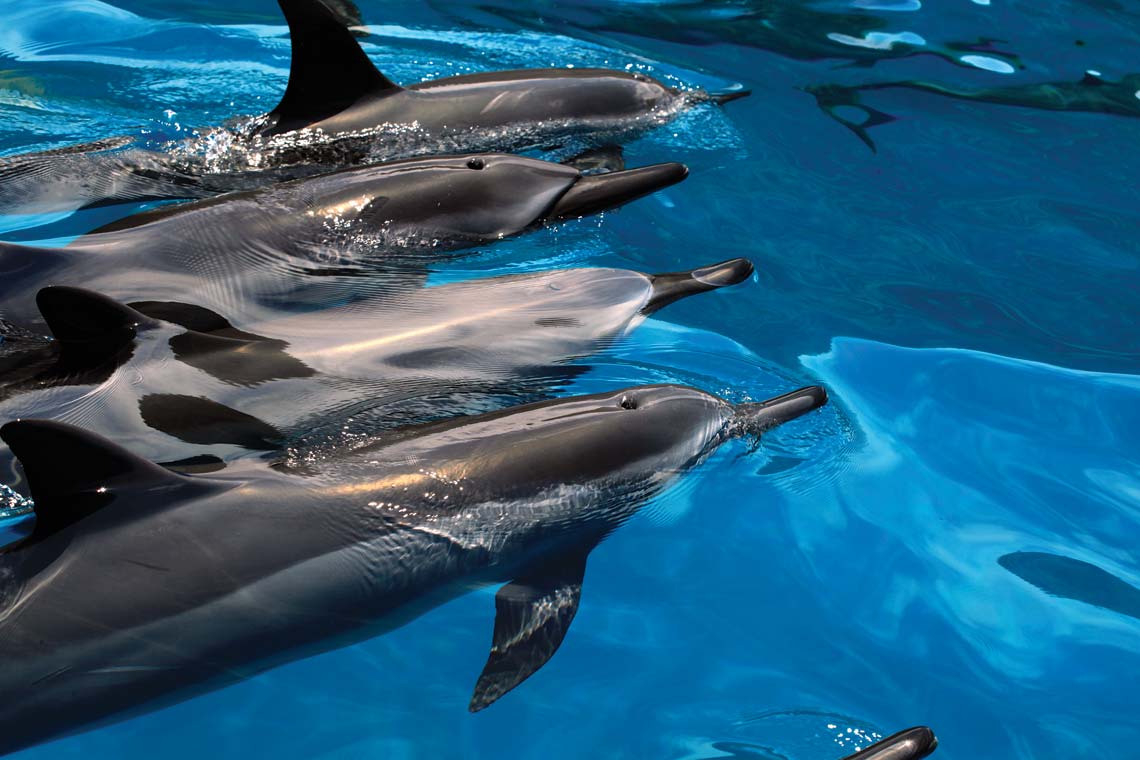Why Do Spinner Dolphins Spin?

Spinner dolphins are among the most fascinating sea creatures in existence. As their name suggests, they are known primarily for their ability to leap into the air in an impressive spinning motion. They are quite a spectacle to behold if you are ever fortunate enough to see them, although relatively little is known about the reason for their characteristic actions.
Why Spinner Dolphins Spin
The short answer is that no one knows for sure why spinner dolphins do what they do. Many theories have been proposed, including displaying dominance, communicating their location to other dolphins, hunting for prey, or simply showing exuberance and having fun. Ultimately, however, the reasons why these majestic creatures spin are a bit of a mystery.
Some biologists believe that spinning is a way to shake off remoras that attach themselves to the dolphins’ backs. These fish have dorsal fins that work like suction cups, enabling them to stick to whales, sharks, and dolphins to get a free meal or a free ride.
This theory actually makes some sense. Remoras can add drag to the streamlined shape of dolphins, slowing them down as they glide through the water.
Furthermore, dolphins have pretty sensitive skin with plenty of nerve endings close to the surface. So having a school of remoras permanently attached to them may cause a great deal of discomfort, which could be why dolphins are so eager to shake them off.
How does spinning get rid of remoras? The spinning action dolphins do as they leap out of the water causes remoras to detach from the skin. Landing heavily on the water’s surfaces finishes off the job, with most remaining remoras knocked off on impact.
How Spinner Dolphins Spin
Leaving speculation aside, an analysis of how spinner dolphins spin proves to be much more informative. Physicist Anthony Nicastro of West Chester University developed a mathematical model that describes the spinning action in detail. Based on calculus theories, the model was published in 2006 in the January edition of the Journal of Experimental Biology.
According to the research, spinner dolphins initiate the spin before they break the surface. With their flippers acting like wings, they start with a slow barrel roll. The water provides a considerable amount of resistance, which is why the spin starts relatively slowly at first.
Even so, the dolphins eventually pick up speed. With their flippers and dorsal fins working together, they can spin once or twice per second, which is pretty impressive in itself.
The action quickly speeds up when the creature breaks the surface of the water. From that point on, they can spin as much as seven times per second. After that, the dolphins twisting their bodies increase the speed considerably, resulting in the characteristic spin.
More Facts About Spinner Dolphins
Like all dolphins, spinner dolphins are pretty impressive in their own right, even without considering their spinning movements. Here are some more interesting facts about these fascinating marine creatures:
Habitat. Spinner dolphins like warm temperatures and are mostly found in temperate or tropical waters around the world. A few different groups frequent specific areas, including the Pacific coast of Central America, the seas bordering Thailand, and all over Hawaii (especially the Na Pali Coast which is home to many dolphins).
Among the different groups, the Hawaiian spinner dolphins are the most social. Most of them approach boats and people readily and spend much of their time close to shore.
Diet. Spinner dolphins are carnivorous creatures, subsisting primarily on a diet of fish and squid. They mainly feed at night, which is when they head out to the deep waters searching for prey. When daylight comes, they swim back to shallower waters and spend most of the time resting, playing, and looking out for the occasional shark.
Behavior. Like most dolphins, spinner dolphins travel in schools. These groups can be quite large, with the biggest consisting of a few hundred dolphins. Spinner dolphins tend to be very social and are known to spend plenty of time traveling and sharing feeding grounds with other sea creatures, such as tunas, humpback whales, and other dolphin species.
Conservation. Like most dolphin species, spinner dolphins face many threats to their well-being and existence. Although they aren’t currently considered endangered, their health and behavior are affected by human activity and the encroachment of other creatures into their habitats.
See the spinner dolphins up close with on a Kauai raft adventure with us!
